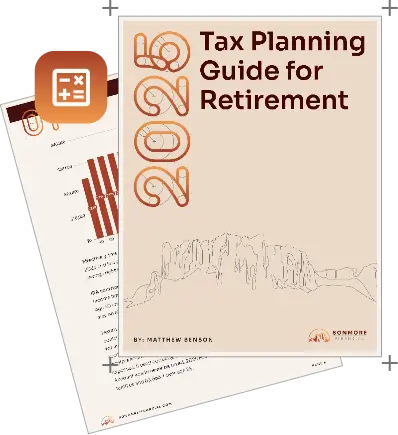Table of contents
Retirement isn’t just about reaching a certain age; it’s about achieving financial independence. Early retirement, a goal many aspire to, requires meticulous planning and informed decision-making. From navigating healthcare before Medicare eligibility to understanding the intricacies of retirement distributions, delaying Social Security, and leveraging income tax gap years, there’s much to consider. Let’s explore these critical aspects to help you pave a smooth path toward early retirement.
Navigating Healthcare Before 65
A crucial aspect of healthcare planning before reaching the age of 65, when Medicare becomes available, involves understanding and leveraging the Premium Tax Credit (PTC). The PTC is a refundable tax credit that helps eligible individuals and families cover the premiums for their insurance when purchased through the Health Insurance Marketplace. This can be a significant benefit for early retirees looking to manage healthcare costs effectively—we have a previous blog post that talks about this more in-depth.
However, qualifying for the PTC requires careful income management, as the credit is income-based. This is where strategic planning for retirement distributions becomes essential. To maximize the benefit of the PTC, you’ll need to maintain an income level within certain thresholds, which requires a fine-tuned approach to how you withdraw from your retirement accounts.
When planning distributions from your 401(k), IRA, or other retirement accounts, consider how the withdrawals will impact your modified adjusted gross income (MAGI). The goal is to keep your MAGI within the range that allows you to qualify for the maximum PTC, thus reducing your health insurance premiums. This might mean taking smaller or strategically timed distributions to maintain a lower income level. Navigating this balance can be complex, as it involves not only understanding the specifics of the PTC but also managing your retirement accounts and tax implications effectively. It may be advantageous to diversify your income sources in retirement, utilizing a combination of taxable, tax-deferred, and tax-free accounts. This diversification can provide more flexibility in managing your income levels for PTC eligibility.
It’s important to engage in proactive tax planning, possibly with the assistance of a financial advisor or tax professional, to optimize your strategy. They can help you understand the nuances of your individual situation and guide you in making decisions that balance your healthcare needs with your overall retirement income strategy.
Understanding Retirement Distributions Before Age 59.5
Navigating the rules for early retirement distributions is crucial to avoid unnecessary penalties and to ensure financial stability. If you’re looking to access your retirement funds before age 59.5, it’s important to be aware of all your options, including specific provisions for company 401(k) plans and the role of non-retirement accounts.
One often overlooked strategy is the age 55 exception for 401(k) distributions. If you leave your job during or after the year you turn 55 (50 for public safety employees), you can start taking distributions from your employer-sponsored 401(k) without the usual 10% early withdrawal penalty. This rule doesn’t apply to IRAs or plans from previous employers, making it a unique benefit of your current 401(k).
In addition to this, incorporating non-retirement accounts into your early retirement strategy can be highly beneficial. By saving a portion of your funds in non-retirement accounts, you gain flexibility in managing your income and investments. These accounts, such as a regular brokerage account, don’t have the same restrictions or penalties for early withdrawals as retirement accounts. This allows you to access funds when needed without worrying about penalties or complex rules.
When planning these distributions, consider the tax implications. While pre-tax 401(k) distributions will be taxed as regular income, withdrawals from non-retirement accounts may have different tax consequences, depending on the nature of the investment and the gains it has accrued. Balancing withdrawals from these various accounts can optimize your tax situation, helping ensure you make the most of your savings.
It’s essential to look at your retirement plan holistically. Factor in all your available accounts, including 401(k)s, IRAs, and non-retirement savings, to create a distribution plan that supports your financial needs while minimizing penalties and taxes. As always, consulting with a financial advisor can provide personalized guidance tailored to your specific situation.
Delaying Social Security: Bridging the Income Gap
One effective strategy for early retirees is to delay claiming Social Security benefits, which can result in significantly increased monthly payments later on. However, this raises the question: how do you manage your finances in the interim? A prudent approach involves adjusting your investment distributions. During this period, you might consider taking larger distributions from your investment portfolio to cover your living expenses. This strategy hinges on having a well-structured investment portfolio that can sustain increased withdrawals without jeopardizing your long-term financial health. It’s a delicate balance between drawing enough to live comfortably and working to ensure your investments continue to grow and support you in the later years of retirement.
This approach requires careful planning. Consider factors like your portfolio’s composition, market conditions, and your risk tolerance. It’s often wise to have a mix of investments, including some that can be liquidated without significant penalties or market impact. The goal is to strategically utilize your investments in a way that bridges your income needs until you start receiving Social Security benefits. We cover this topic in greater depth in our blog on when to claim social security.
Capitalizing on Income Tax Gap Years
Income tax gap years present a unique opportunity for strategic tax planning in early retirement, particularly when it comes to Roth conversions. Let’s illustrate this with an example:
Suppose you’re currently in a tax gap year, where your income is temporarily lower before your Social Security benefits and required minimum distributions (RMDs) from retirement accounts begin. You’re in the 12% tax bracket now, but once RMDs and Social Security kick in, you anticipate moving into the 22% tax bracket.
In this scenario, converting a portion of your traditional IRA to a Roth IRA during your tax gap year can be advantageous. By converting, you pay income tax on the converted amount at your current lower rate (12%) rather than the higher rate (22%) you expect in the future. For instance, if you convert $50,000 from a traditional IRA to a Roth IRA during a gap year, you’ll pay taxes on those converted funds at your current 12% rate, which amounts to $6,000. If you waited until your tax rate rose to 22%, the tax on the same conversion would be $11,000—almost double.
The benefit of this strategy is twofold:
- You pay taxes now at a lower rate, reducing your lifetime tax liability.
- The converted amount in the Roth IRA grows tax-free, and qualified withdrawals in retirement are tax-free, providing you with tax-efficient income down the road.
This strategy requires careful planning to ensure you’re not converting too much and inadvertently pushing yourself into a higher tax bracket. It’s also vital to have funds available to pay the tax on the conversion without dipping into your retirement accounts, as this could counter the benefits of the strategy.
Engaging in such proactive tax planning during your income tax gap years—with the assistance of a financial advisor or tax specialist—can significantly impact your overall financial health in retirement.
Conclusion
Retiring early is a dream for many, but it comes with its own set of challenges. From healthcare costs to making sure your retirement savings last, early retirees must plan carefully to ensure a secure financial future. If you’re considering early retirement and live in Arizona, our free Arizona Retiree Toolkit can help guide you through these critical decisions, offering expert strategies tailored to your unique circumstances. Download your toolkit here to start planning for a retirement that works for you.
Ready to embark on your early retirement journey? Contact us for personalized advice—let’s craft a retirement plan that aligns with your financial goals and dreams. Your path to financial freedom starts here.
Advisory services are offered through Sonmore Financial LLC, an Investment Advisor in the State of Arizona. Sonmore Financial LLC does not offer tax planning or legal services but may provide references to tax services or legal providers. Sonmore Financial LLC may also work with your attorney or independent tax or legal counsel. Please consult a qualified professional for assistance with these matters.



